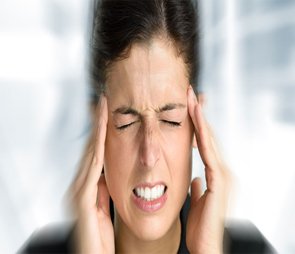
A migraine headache is a form of vascular headache. Migraine headache is caused by vasodilatation (enlargement of blood vessels) that causes the release of chemicals from nerve fibers that coil around the large arteries of the brain. It is a debilitating condition characterized by moderate to severe headaches, and nausea, about 3 times more common in women than in men. The typical migraine headache is unilateral pain (affecting one half of the head) and pulsating in nature, lasting from 4 to 72 hours. The cause of migraines is unknown. Triggers - A minority of migraines maybe induced by triggers. The most common triggers quoted are stress, hunger, and fatigue; however, these equally contribute to tension headaches.
Symptoms include nausea, vomiting, photophobia (increased sensitivity to light), phonophobia (increased sensitivity to sound), and is aggravated by routine activity. The severity of the pain, duration of the headache, and frequency of attacks is variable.
There are four possible phases to a migraine attack. They are listed below - not all the phases are necessarily experienced. Additionally, the phases experienced and the symptoms experienced during them can vary from one migraine attack to another in the same person;
Lack of sleep, skipping meals, drinking alcohol, excessive exercise or too little physical activity, stress, travel, smoking, overweight. The highest incidence is in teenage years. Migraine headaches are more common among females—with a 3:1 female to male ratio.
Migraines seem to run in families. Approximately 90% of migraine patients have a positive family history. Migraines may be triggered by the blood vessels overreacting to a variety of factors, including menstruation, fatigue, changes in altitude, weather, or time zone, glaring lights, perfumes or other odors.